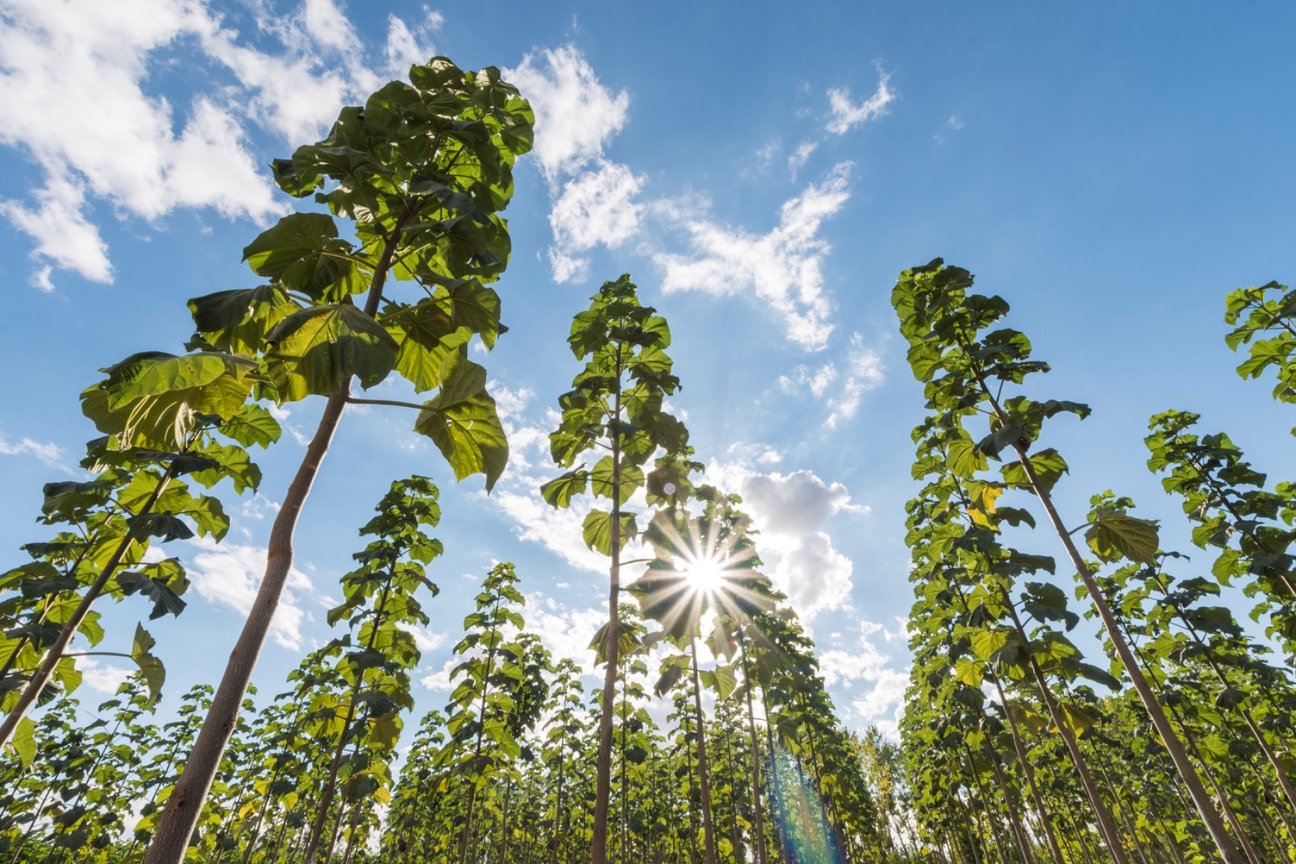
Is your soil type suitable for Paulownia?
The Best Soil Types for Planting Paulownia One of the most frequently asked questions from our customers is whether their soil is suitable for plantingPaulownia. The tree is known for its rapid growth and strong wood, which is highly demanded in the biobased construction industry. For Paulownia cultivation, it is important that the soil is well-draining, has the right structure and pH level, is the appropriate type, and that water management is in order.


Sandy Soil: Light and Good Drainage
Paulownia trees thrive well in sandy soils, especially because these soils provide excellent drainage. Sandy soil prevents waterlogging, which is essential because Paulownia is susceptible to root rot. Although sandy soil generally contains fewer nutrients, this can be compensated by adding organic fertilizers to create a fertile base. In our guidance, we offer advice in the form of a fertilization plan; contact us if you have any questions about this.
Peaty Soils:
Paulownia is generally not suitable for cultivation on peaty soils. Paulownia trees do not like wet feet and require well-drained soil. Too much water can lead to root rot and other problems. If you are unsure whether this is also the case on your plot, contact us for a supplementary investigation.
Loamy Soil: A Good Balance
Loamy soil offers a good balance in terms of soil type for Paulownia trees. Generally, this soil is rich in nutrients and has a nice balance between drainage and moisture retention. The airy structure of loam ensures that roots can spread easily, supporting the rapid growth of Paulownia. We always recommend taking soil samples for the best possible advice.
Clay: Careful Approach Required
Although Paulownia trees can grow in clay soil, this requires extra attention. Clay tends to hold water, which can lead to saturated roots and reduced growth. It is essential to improve clay soil by adding organic material and aerating the soil. This helps create an environment in which Paulownia can develop. Based on the sedimentation percentage, it can be determined whether the soil is suitable for Paulownia growth; we recommend a sedimentation rate of <20% for clay and silty soils.
Groundwater Level: The Invisible Factor
The groundwater level plays a crucial role in planting Paulownia trees. A groundwater level that is too high can cause the roots to be constantly in water, which impairs oxygen supply and can cause root rot. Ideally, the groundwater level is no higher than 1 to 1.5 meters below the surface.
Conclusion
At Dealin.Green, we help farmers get the most out of their Paulownia plantings. We always advise having a soil type analysis done; we receive the analysis and then provide tailored advice. Are you unsure whether your soil type is suitable, or would you like to schedule a conversation with one of our advisors in your region?Please contact us!



Paulownia trees thrive well in sandy soils, especially because these soils provide excellent drainage. Sandy soil prevents waterlogging, which is essential because Paulownia is susceptible to root rot. Although sandy soil generally contains fewer nutrients, this can be compensated by adding organic fertilizers to create a fertile base. In our guidance, we offer advice in the form of a fertilization plan; contact us if you have any questions about this.
Peaty Soils:
Paulownia is generally not suitable for cultivation on peaty soils. Paulownia trees do not like wet feet and require well-drained soil. Too much water can lead to root rot and other problems. If you are unsure whether this is also the case on your plot, contact us for a supplementary investigation.
Loamy Soil: A Good Balance
Loamy soil offers a good balance in terms of soil type for Paulownia trees. Generally, this soil is rich in nutrients and has a nice balance between drainage and moisture retention. The airy structure of loam ensures that roots can spread easily, supporting the rapid growth of Paulownia. We always recommend taking soil samples for the best possible advice.
Clay: Careful Approach Required
Although Paulownia trees can grow in clay soil, this requires extra attention. Clay tends to hold water, which can lead to saturated roots and reduced growth. It is essential to improve clay soil by adding organic material and aerating the soil. This helps create an environment in which Paulownia can develop. Based on the sedimentation percentage, it can be determined whether the soil is suitable for Paulownia growth; we recommend a sedimentation rate of <20% for clay and silty soils.
Groundwater Level: The Invisible Factor
The groundwater level plays a crucial role in planting Paulownia trees. A groundwater level that is too high can cause the roots to be constantly in water, which impairs oxygen supply and can cause root rot. Ideally, the groundwater level is no higher than 1 to 1.5 meters below the surface.
Conclusion
At Dealin.Green, we help farmers get the most out of their Paulownia plantings. We always advise having a soil type analysis done; we receive the analysis and then provide tailored advice. Are you unsure whether your soil type is suitable, or would you like to schedule a conversation with one of our advisors in your region?Please contact us!

Dinsdag, September 10, 2024
Download alle brochures
Met een druk op de knop ontvang je de volgende informatie:
- De Miscanthus brochure
- De Paulownia (Kiri) brochure
- De carbon credits brochure
- De algemene brochure
Email
+31 (0) 85 107 2190
Contact pagina
Dealin Green is ISO gecertificeerd voor ISO 9001 en ISO 14001

Sitelinks
Adres
De Drieslag 25, 8251 JZ Dronten
Algemene Voorwaarden
Privacy Statement
Algemene voorwaarden platform gebruikers

Ga naar de Portal


